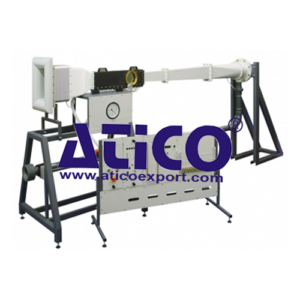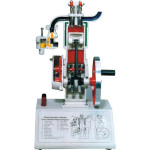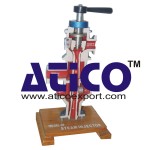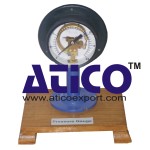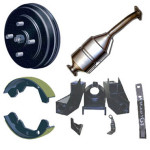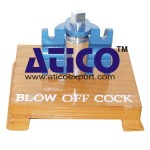Description
A suction-type continuous-operation supersonic wind tunnel for investigations into subsonic and supersonic air flow. It also allows students to study air flow in two dimensions around aerodynamic models. An instrument frame (supplied) holds a remote-control unit that controls a high-capacity vacuum pump (supplied). The pump creates low pressure downstream of the working section to draw air into the wind tunnel. A bypass duct, with a hand-operated valve, allows the operator to reduce the air fl ow through the working section, without disturbing the quality of the main air flow. This is useful for startup and shutdown and for subsonic tests. The working section of the wind tunnel is a convergent divergent nozzle with a removable top part (‘liner’). The shape of the liner controls the maximum air velocity at the divergent part of the working section. Included are three different shaped liners. A selection of models are included with the equipment (one has pressure tappings) for experiments in two dimensional flow. These fi t in the ‘portal’ of the working section, flush to both windows. A geared mechanism allows students to adjust the incidence angle of the models. An encoder works with the optional VDAS to measure the model angle. Pressure tappings along the working section connect to a ‘mimic’ panel and multi-pressure display unit in the instrument frame. The display unit shows the pressures at the tappings. The display includes calibrated pressure sensors to measure pressures relative to atmosphere. It also shows the pressures on one of the models. An analogue pressure gauge measures and displays the suction of the pump (tunnel reference pressure). This pressure line also connects to the multi-pressure display for data acquisition. The equipment works with optional Versatile Data Acquisition System (VDAS®) and can quickly and conveniently connect to a frame-mounting interface unit (VDAS-F, not included). Using VDAS® enables accurate real-time data capture, monitoring, display, calculation and charting of all relevant parameters on a suitable computer (computer not included). The wind tunnel includes transparent windows in the working section. These are high-quality optical glass suitable for use with the optional Schlieren Apparatus (available separately) enabling display and recording of images of high-speed fl ow.
Learning Outcomes
- Pressure distribution along a convergent/divergent (Laval) nozzle with subsonic and supersonic air flow
- Comparison of theoretical and actual pressure distributions
- Comparison of actual and theoretical area ratios of a nozzle at supersonic air velocities (Mach numbers)
- Pressures around a two-dimensional model in subsonic and supersonic fl ow conditions, at different angles of incidence
- Lift coefficients for aerodynamic models in supersonic flow
- Shock waves and expansion patterns around a two dimensional model in supersonic flow conditions (when used with the optional Schlieren apparatus).
Specifications
ATICO is committed to a programme of continuous improvement; hence we reserve the right to alter the design and product specification without prior notice.
Vacuum pump dimensions and weight (including hood):
Nett (assembled): 1800 mm x 1800 mm x 1500 mm plus a
silencer of approximate height 2600 mm; 1750 kg
Packed: 7.44 m3 and 1970 kg
Wind tunnel dimension and weight:
Nett (assembled): 4000 mm long x 900 mm wide x
1600 mm high; 209 kg
Packed: Approximately 6.5 m3; 250 kg
Working Section
Full section: 25.4mm wide, 101.6mm high and 647mm long
Viewing window: 106.1mm high and 106.1mm wide
Air speeds:
Interchangeable liners are provided to give nominal
working section airspeeds of:
• Mach 1.8
• Mach 1.4
• Subsonic
Models (included):
• 5-degree single wedge
• 7-degree double wedge
• 10-degree double wedge
• 10-degree double wedge with two pressure tappings.
Models adjustment:
Nominally ± 10 degrees
Instruments:
• Angle encoder input board for VDAS-F
• Angle encoder
• 32-way pressure display
• Pressure mimic module
• Delivery pressure – mechanical gauge and electronic transducer
• Supply pressure – mechanical gauge
Operating Conditions
- Operating Environment:
Laboratory - Storage Temprature Range :
–25°C to +55°C (when packed for transport) - Operating Temprature range:
+5°C to +40°C - Operating relative humidity range:
80% at temperatures < 31°C decreasing linearly to 50% at 40°C

